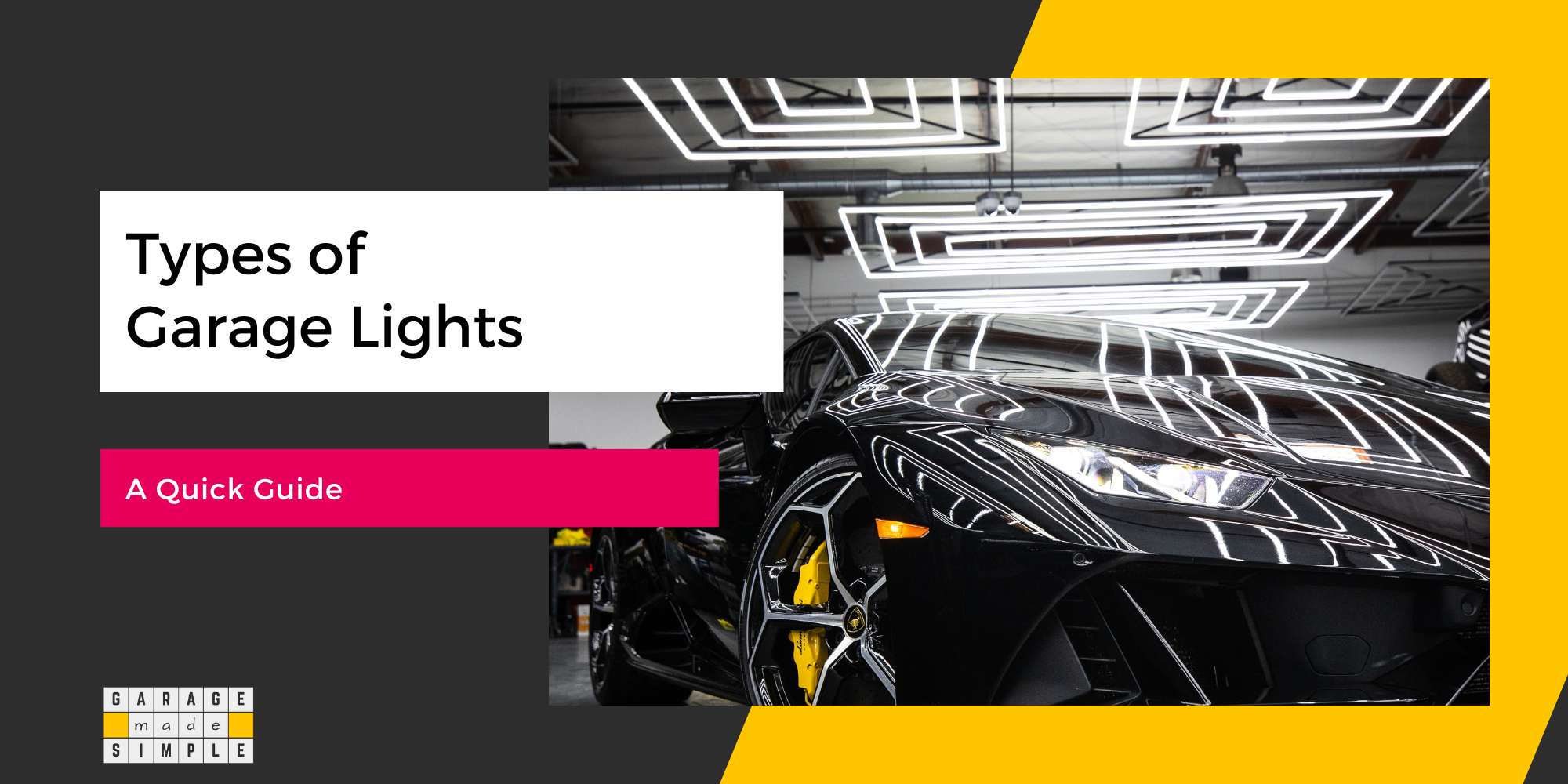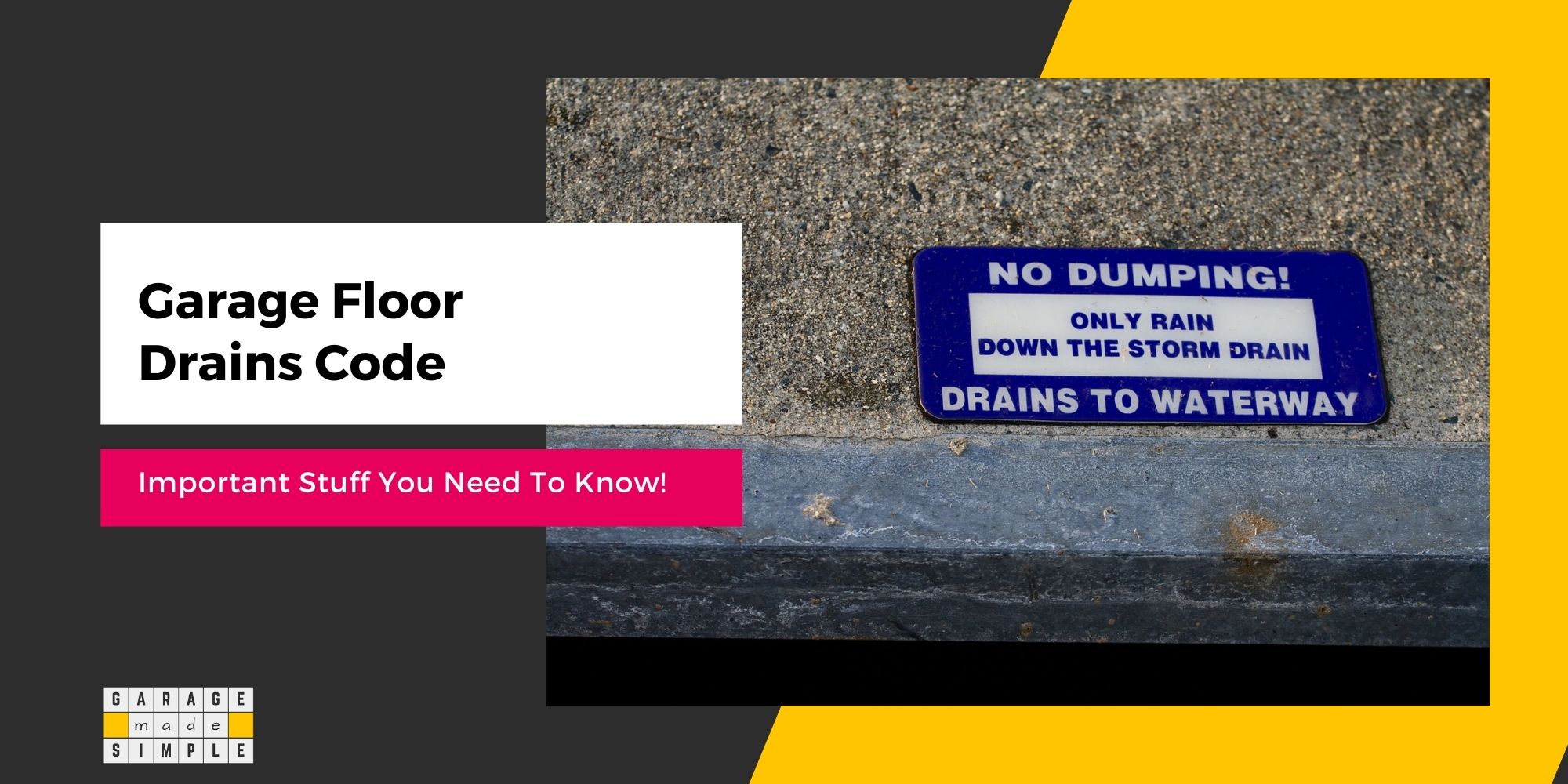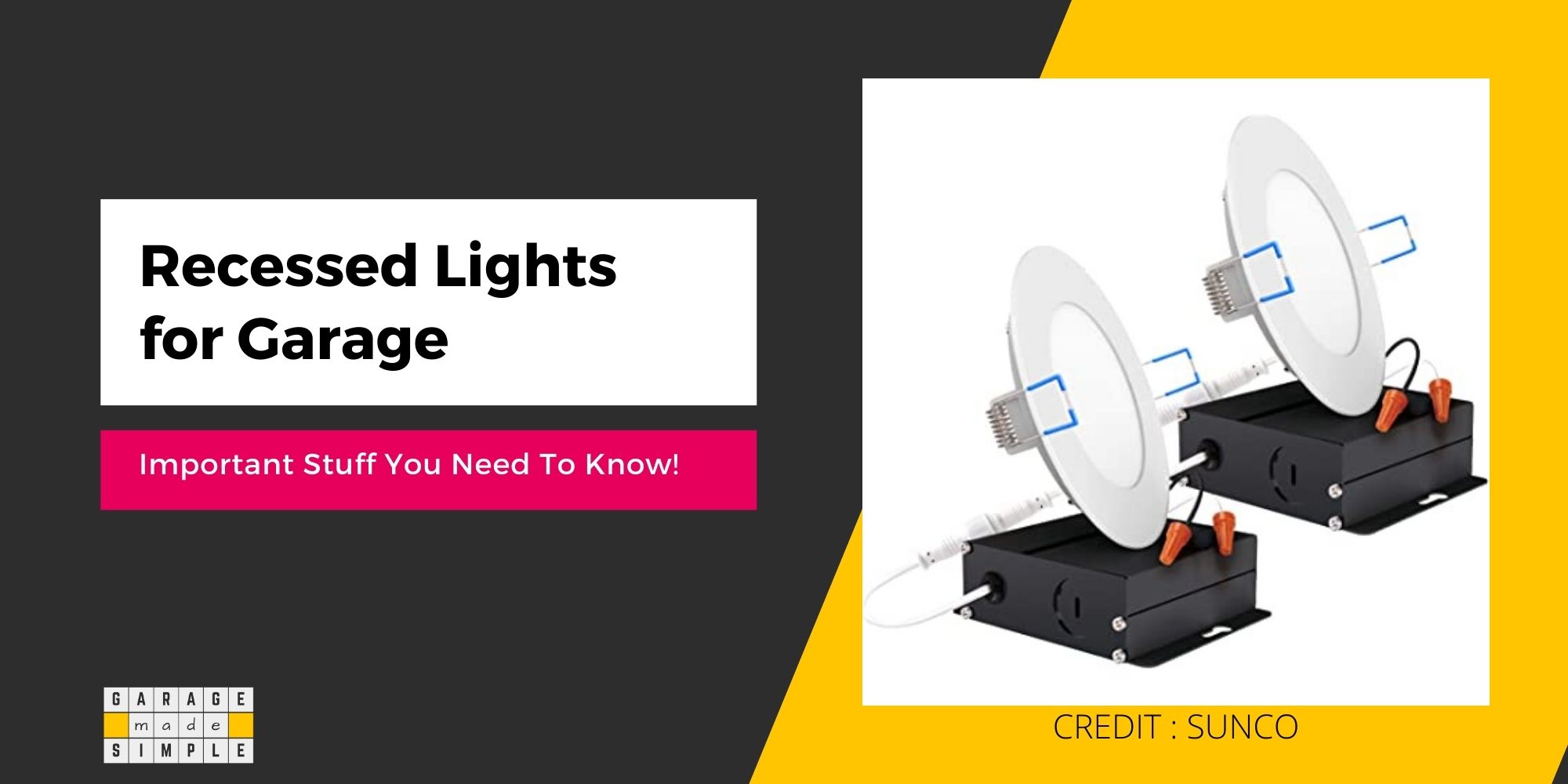Does A Garage Subpanel Need A Ground Rod? Helpful Guide
As an Amazon Associate, I earn from qualifying purchases.
Does A Garage Subpanel Need A Ground Rod?
A detached garage will certainly have a subpanel as per NEC code. An attached garage may also have a separate subpanel.
The feeder cable from the main panel in the house to the garage subpanel should have four wires: two “hot”, one “neutral” and one “ground”.
The main panel has ground rods but does a garage subpanel need a ground rod as well?
The subpanel in an attached garage does not require a separate ground rod as it is in the same building as the main panel. The subpanel in a detached garage needs ground rod as it is in a detached building. This is the NEC Code since 2008.
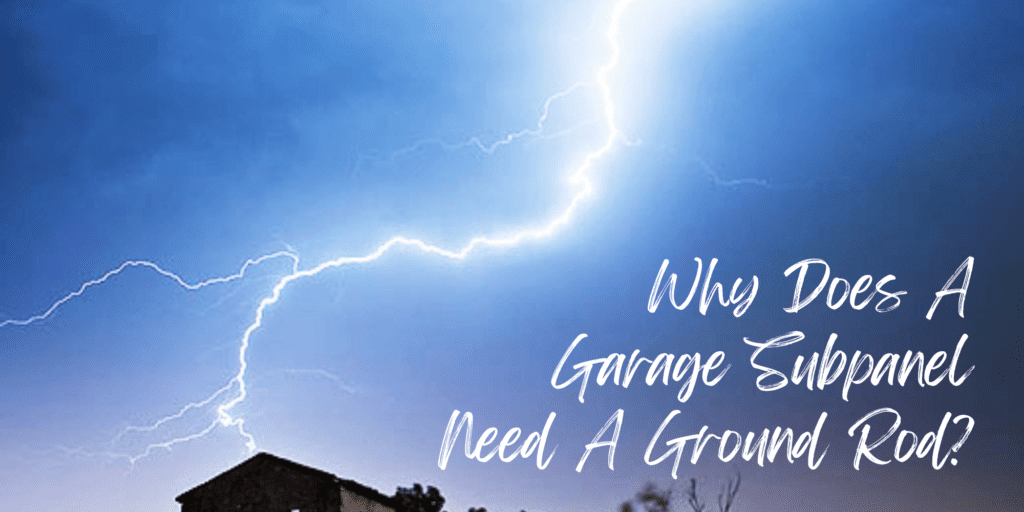
Key Takeaways:
- Detached garages require a subpanel as per NEC code; attached garages may also have one.
- Feeder cable must include two hot wires, one neutral, and one ground from the main panel to the garage subpanel.
- A separate ground rod is essential for detached garage subpanels, safeguarding against surges caused by lightning, short circuits, overloads, or power restoration.
- Subpanels reduce wiring costs, offer convenience, and accommodate extra circuits, making them vital for both attached and detached garages.
- In subpanels, disconnecting the neutral and ground is crucial to prevent electrical hazards and ensure safety.
- Attached garage subpanels do not need separate ground rods but require proper grounding within the structure.
- Detached garage subpanels require two ground rods at least 8 feet apart, adhering to NEC code for proper and safe grounding.
Why Does A Garage Subpanel Need A Ground Rod?
Electrical current takes the path of least resistance whenever there is a surge in voltage. The surge may be caused by:
- Lightning strikes
- Short-circuiting
- Equipment overload
- Restoration of power after a power outage
A grounding system, which includes the grounding rods, is required to protect the entire electrical system: the wiring and the equipment. It will ensure that sensitive electronic equipment doesn’t get fried and the wires don’t heat up and catch fire.
Most importantly it protects personnel from risk of electric shock and electrocution.
Why Does a Garage Need a Subpanel?
An attached or detached garage needs its own subpanel for one or more of the following reasons:
By Code
A detached garage is required to have a subpanel as per NEC code.
Cost Reduction
Subpanels, even within the house such as in an attached garage, help reduce the wiring cost. You can run the feeder cable from the main panel to the subpanel and then run branch circuits from the subpanel to the individual appliances, equipment and receptacles.
This arrangement will require less wire than if you were to run the branch circuits from the main panel to the individual appliances, equipment and receptacles. Less wiring means lower cost in materials & labor.
Convenience
A subpanel brings the convenience of controlling a section of the system without having to go back to the main panel. This convenience is certainly required when it comes to the electrical system in a detached garage which is some distance away from the house.
Imagine working in a detached garage, 100 feet away from the house, and having to go back to the main panel for resetting breaker switches.
Accommodate Additional Circuits
A subpanel lets you increase the number of circuits if the main panel is full. It may be your only option as your requirements for outlets, lights or equipment goes up with time.
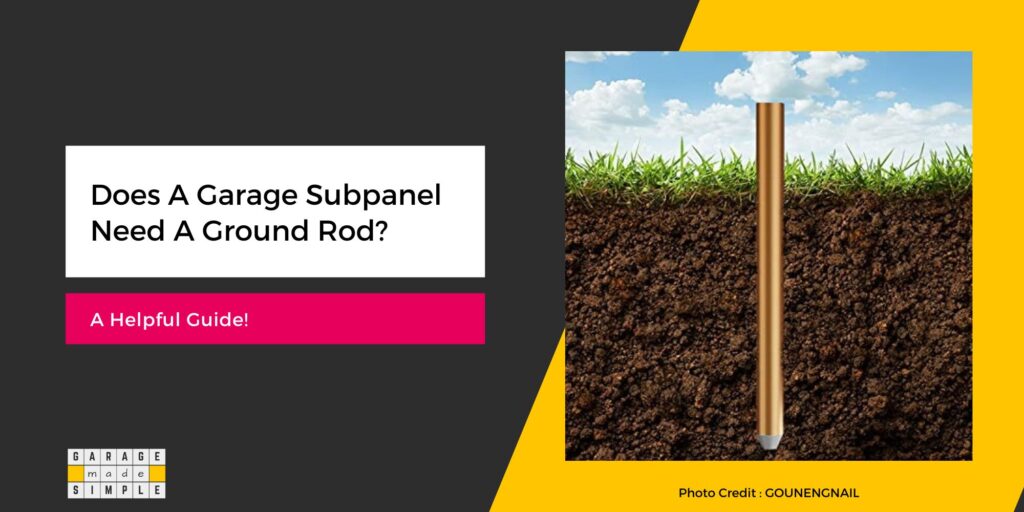
Does An Attached Garage Subpanel Need A Ground Rod?
An attached garage subpanel is not required to have a separate ground rod as it is in the same structure as the main panel. You will, of course, need to run the ground wire from the subpanel to the main panel.
The ground rods attached to the main panel are enough to take care of any voltage surge.
Does A Detached Garage Subpanel Need A Ground Rod?
A detached garage subpanel is required to have its own ground rod as per the NEC code.
Why Should the Neutral & Ground be Disconnected Within a Subpanel?
THE NEUTRAL BUS BAR AND THE GROUND BUS BAR IN A SUB PANEL SHOULD ALWAYS BE DISCONNECTED.
The above rule is absolutely critical. Violate this rule and you are creating an extremely hazardous electrical system.
A lot of people may know this rule but do not understand the reasoning behind it. You will have a lot more respect for this rule if you understand the reasoning behind the rule.
The feeder cable from the main panel to the subpanel should have four wires. Older models may have only three but this is not permitted by the code anymore.
The 4 wires are
- 2 lines that are ungrounded conductors or “hots”
- 1 line that is a grounded conductor or “neutral”
- 1 line that is an equipment grounding conductor or “ground”
In the main panel the neutral and the ground must be connected. In every subpanel, thereafter, the neutral and the ground must be isolated from each other.
This is because:
- The “neutral” carries the returning neutral current back to the transformer. If this is connected to the “ground” then the “ground” gets energized too. But the “ground” should never be energized as it must be fully available for the fault current, in case of a malfunction.
- An energized “ground” can energize the casings & enclosures of appliances & equipment, creating a potential electric shock hazard for personnel..
By the same logic, in a subpanel
- The “neutral” bus should be isolated from the subpanel box and
- The “ground” bus should be bonded to the subpanel box
To summarize:
| MAIN PANELIN HOUSE | SUBPANEL INATTACHED GARAGE | SUBPANEL INDETACHED GARAGE | |
| Neutral Bar & Ground Bar | Connected | Disconnected | Disconnected |
| Ground Rod | Required | Not Required | Required |
NOTE: If you want to go into the details download the PDF from CREIA. Also watch a very informative and engaging YouTube video on the subject from https://www.youtube.com/c/BenjaminSahlstrom is below
How Many Grounding Rods For A Subpanel?
Section 250.56 of the 2020 NEC code requires more than one ground rod if the ground resistance is 25 ohms or more. To be on the safe side, it is best to just go ahead and install two ground rods for every subpanel in a detached location.
Remember that the two ground rods should be separated from each other by at least 8 feet. There is no maximum limit so the greater the distance the better it is. A distance of 16’ – 20’ is considered good practice.
To comply with the NEC code, as well as the UL 467 standards (Grounding and Bonding Equipment), the grounding rod should be 5/8 inches in diameter and 8 feet long. It should be made either entirely from copper or copper bonded steel.
Copper bonded steel is superior as it has higher strength and the required conductivity.
How To Ground A Detached Garage Subpanel?
The physical work of grounding a garage subpanel is not very difficult, but it must comply with the local building code. So if you do it yourself, you have to be very sure of the compliance.
Using the services of a qualified local electrician is an easy (though expensive) way to ensure full compliance.
The step by step process of installing a detached garage subpanel ground rod is as under:
- Find 2 spots which are 16’ to 20’ apart from each other. The soil should be soft as the grounding rods need to be driven 8’ into the ground. Avoid rocky patches and those that may have drainage pipes or other utilities running underground.
- The locations should ideally be equidistant from the garage subpanel and as close as possible to minimize the grounding electrode conductor length.
- Select grounding rods that are NEC and UL 467 compliant. My recommendation is to use GOUNENGNAIL Industrial Grade Ground Rods (2, 5/8”x8′) available on Amazon. The copper-clad steel grounding electrodes are suitable for grounding construction under different soil moisture, temperature, PH value and resistivity changes.
- The ground rods can be installed vertically or at an angle. Both are acceptable. You can just use a hammer or an electric hammer. However, you need a Ground Rod Hammer Cap or Ground Rod Driver to make the job manageable.
- Another way to make the job easier, if you have hard or rocky soil, is to first dig a hole 4’ deep. Drive the ground rod in this hole and then backfill the hole.
- Use a clamp to connect one end of the grounding electrode conductor to the ground rod. Run the other end of the grounding electrode conductor to the ground bus of the detached garage subpanel.
DISCLAIMER: What Is the Safest Way to Handle Electrical Wires?
This post is for information only. I strongly recommend that all electrical work should be entrusted to licensed professional electricians. In case you do decide to do some of the work yourself, make sure that:
“Treat all electrical wiring, even “de-energized” ones as if it is live, unless it has been locked out and tagged”
You must follow the basic safety guidelines:
- Use protective eyewear, especially when drilling or grinding metal
- Wear insulated rubber gloves when working on any circuit or branch circuit
- Always use insulated tools while working with electricity
- De-energize the electrical wires on which you will be working. Tag the circuit breaker to prevent someone from switching it on accidentally
- Electrical wiring in wet or damp locations or underground must be within a PVC conduit
- Underground wiring conduits should be at least 18 inches below grade as per code
- All receptacles for equipment that could be in wet or damp locations should be equipped with Ground Fault Circuit Interrupter (GFCI)
- Never use old frayed cables, damaged insulation, or broken plugs
- High-voltage equipment should be properly grounded to ensure electricity flows directly to the ground and not through the person in contact with the live wire
Thank you very much for reading the post. I do hope you found it informative and useful.

